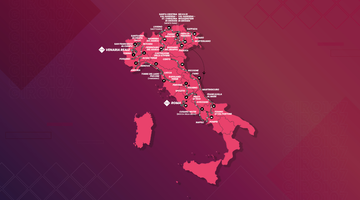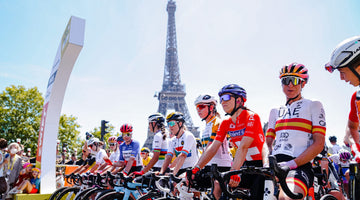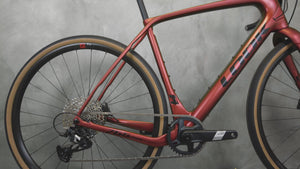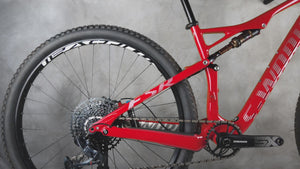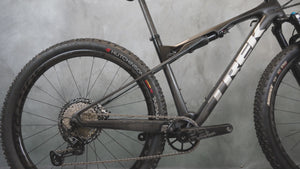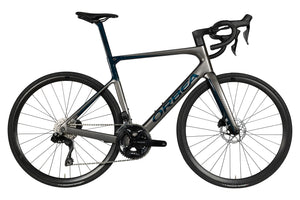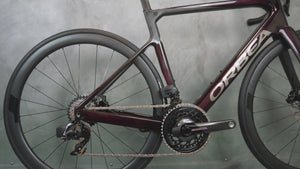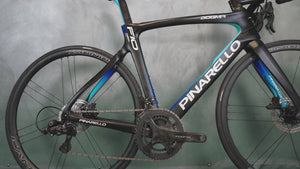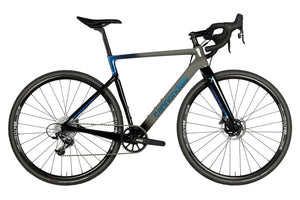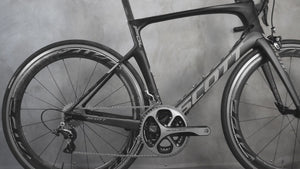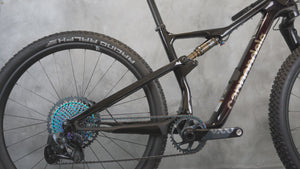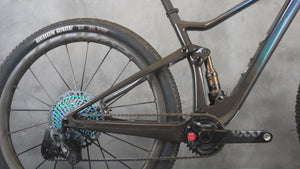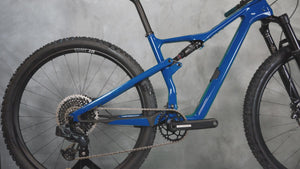The Tour de France in Alsace: legendary passes and cyclists
In this Article
A few weeks ago, we showcased Alsace's most legendary passesthat are a must-see for their scenery or the sporting challenge they represent. Today, we're taking you further afield to the passes that have built the reputation of the Vosges cycling region thanks to the Tour de France. If the best example is the Tour's 2006 start in Strasbourg, the arrival of the 1st Women's Tour de France in 2022 will also be remembered for Annemiek Van Vleuten's victory. Here are the passes climbed in 2022 and 2023 by these cycling heroes and heroines who share the same passion as you: cycling!

Top finishes in 2022 and 2023
La Super Planche des Belles Filles
The highlight of the two Tour de France events in 2022, the Super Planche des Belles is the scene of some of the most epic cycling battles. Climbed seven times between 2012 and 2022, we can't forget the final finish of the 1st edition of the Tour de France Femmes or the famous time trial that crowned Tadej Pogacar in 2020. Your mountain bike will be de rigueur as you embark on this climb. If you wish to continue up to the Super Planche, you'll have to take an unpaved forest track, so be prepared for the long haul. check your tires. Beware, however, of the steep gradients on this last section of road (+1 km at 11%, including a final stretch at 24%).
🚵 Planche des Belles Filles from Plancher les Mines: 5.5 km at an average gradient of 8.5%. 
Le Markstein via Platzerwasel
Le Markstein is one of the most popular ski resorts in the Vosges, summer and winter alike, and this year (2023) hosts the finish of the 20th stage of the Tour de France. The last few kilometers after the summit of the Platzerwasel offer a sumptuous panorama of the Hautes Chaumes. This climb, shaded and fairly regular despite a few slope breaks, comes after the Petit Ballon. If you're looking for a more accessible challenge, you can start from Munster: a slightly longer but unique ascent to reach the Route des Crêtes.
With the Platzerwasel as the judge of peace before 7 km of fast riding on the Route des Crêtes, the professionals' choice of bikes, between mountain and aero, could offer us a few surprises. Find out more on our website, the bikes used by the Tour de France 2023 riders.
🚵 Platzerwasel from Munster via Metzeral: 16.2 km at an average of 4.8%.
Le Markstein via the Grand Ballon
Last year (2022), the women also completed the Petit Ballon - Platzerwasel - Markstein link-up before diving back into the Thur valley. True champions, they then climbed the Grand Ballon before finishing, like the men in 2023, on the Markstein. Such a demanding sequence requires careful attention to every detail, not least the choice of a bike suited to your body type. To accompany you, find out more about our advice on buying a bike for women.
There's another way to reach this now-famous Tour de France finish: the ascent via Oderen and Lac de Kruth, where you can cool off before the climb.
🚵 Le Markstein via Lac de Kruth: 20.5 km at an average gradient of 3.5%.

Other passes in 2022 and 2023
The last three stages of the Tour de France for women in 2022 and the penultimate stage for men this year will cross the Vosges mountains and its cycling passes on roads that are often less popular than those you already know. That's why we're continuing to accompany you as you discover the many Vosges passes by bike.
The Grand Ballon: its other facets
The roof of the Vosges (1,424 m) and an unavoidable stop-off point when it comes to cycling, the Grand Ballon has many sides. Willer-sur-Thur is by far the most popular with cyclists, and with major races such as the Tour de France. Already recommended in our selection of mountain passes to climbwe're taking advantage of the Tour wave to reveal two other interesting climbs!
The climb via Geishouse is our tip of the day. A challenging climb because of its irregular terrain, it's ideal for cyclists on their bikes, or for those who want to take it easy. electric gravel. But don't worry, it's possible to climb with any bike! Until recently, it was a forest road, but now it's a magnificent bicycle path with a new, impeccable tarmac and, above all, it's closed to traffic! It ends at the Ferme du Haag; look up, turn right and you'll have a breathtaking view of the Grand Ballon radar control center.
🚵 Grand Ballon via Geishouse: 12.3 km at an average gradient of 7.7%.
Our other favorite this time is for the slope through Le Vieil Armandotherwise known as Hartmannswillerkopf. Aside from its sporting dimension, it's for its history that we suggest this climb. The Hartmannswillerkopf is one of Alsace's most important military sites. A national monument has been erected on the rocky spur overlooking the Alsace plain, in memory of the French soldiers who fell in the First World War. To reach this monument, you'll need to drive a dozen kilometers from Cernay. After that, you'll need to extend your effort for a further 11 kilometers, during which a short, winding descent with panoramic views over the Vosges massif and opening onto the Thur valley will take you to the Col Amic, from where you can complete your ascent of the Grand Ballon. If you descend this way, beware of the cobbled sections that can be tricky on bends.
🚵 Grand Ballon via Vieil Armand: 23km at an average gradient of 4.5%.

Col de la Schlucht
The Col de la Schlucht is an unavoidable pass, marking the boundary between the Vosges and the Haut Rhin, and linking Munster to La Bresse - Gerardmer. Its importance is reflected in the number of cyclists and motorists who use it. And the Tour de France is no exception. The Vosges stages are frequently used, and this year will be no different. La Bresse, the largest resort in the Vosges with its popular ski area, but also its summer resort offering a wide range of outdoor activities, offers a highly varied cycling terrain! The men's Tour de France will be criss-crossing the surrounding moguls: Col des Croix des Moinats, Col de Grosse Pierre, before embarking on the final section of the Schlucht and plunging towards Munster.
It's via Munster that we invite you to climb this pass. More open landscapes on the lower part and a new asphalt surface make this a pleasant climb. A regular, low-percentage climb, it's suitable for all types of bike, mountain or aero.
🚵 Col des Croix des Moinats via Cornimont: 5.3 km at an average gradient of 7.1%.
🚵 Col de Grosse Pierre via La Bresse: 5.7 km at an average gradient of 5.4%.
🚵 Col de la Schlucht via Munster: 18 km at 4.2% average speed
Firstplan and Hundsruck passes
Before closing this "Alsace passes" page, we wanted to share with you two final climbs that we particularly appreciate, and which also saw the Tour de France riders pass through.
The Col du Hundsruck (Tour de France 2019 in particular) for its peacefulness and the panoramic views it offers at the summit. From Thann, trust us, take the Steinby forest road: peace and quiet guaranteed, as it is closed to traffic and leads to the summit some 3 kilometers away.
🚵 Col du Hundsruck from Thann: 9.5km at an average gradient of 4.3%.
Climbed for the last time in 2014, the Col du Firstplan is our latest nod (not exhaustive, of course!) to Alsatian passes. It's mainly for its hilly approach through the fields, with the mountain in the background, that we savor it. With a profile quite similar to that of the Hundsruck, this climb is accessible to all cyclists, allowing you to complete several passes in a single day.
🚵 Col du Firstplan from Soultzmatt: 9.8km at an average gradient of 4.3%.
Legendary cyclists in Alsace
How could we conclude this article without mentioning the men and women who make the local passes legendary through their stories and exploits? Indeed, French racers have proudly ridden the roads of Alsace during their respective Tour de France. A look back over the last 10 years:
Thibaut Pinot: the regional
The native of Lure (Haute Saône) is surely the rider who best represents the Vosges. Still living in his native region (Mélisey), he rides all year round on the passes we've covered. It's also on his home turf that he achieves some notable performances, perhaps not his finest, but at least those that have a special flavor thanks to Thibaut Pinot's proximity to his family and his training routes. His major feats in the Vosges include overall victory in the Tour d'Alsace in 2011, whose final finish was judged on the summit of the Ballon d'Alsace. But also his 2nd place on home soil at La Planche des Belles Filles on stage 10 of the 2014 Tour de France, where he finished on the overall podium (3rd). Indeed, it's on this climb that his popularity translates best: his name appears on the road at every bend and more than a hundred times in the final 500 meters. As if on cue, for his last Tour de France, Thibaut will be crossing his massif on the 20th and penultimate stage. A grand tribute will be paid to him in the Petit Ballon; a festive moment guaranteed!
Julian Alaphilippe: the puncheur
It was in the Grand Est region that Julian Alaphilippe made his mark on the 2019 Tour de France, where he took the yellow jersey in the Epernay vineyards. He arrives in Alsace as overall leader. He dons the jersey for the 3rd time on the Haut Koenigsbourg stage to Colmar. He lost the jersey the following day on the terrible Planche des Belles Filles climb, by just 6 seconds; a stage that saw the Tour de France peloton climb the Markstein, the Grand Ballon, the Hundsruck pass and the Ballon d'Alsace.
Thomas Voeckler: the native
Born in Schiltigheim, a stone's throw from the The Cyclist House in the suburbs of Strasbourg, Thomas Voeckler is the French rider of the last 20 years who has worn the yellow jersey the most times: 10 times in 2004 and 10 times in 2011, when he finished 4th overall. Beyond the region of his birth, Alsace is also a land where this champion has distinguished himself. For example, his ride at the front of the race during the 10th stage of the 2014 Tour de France between Mulhouse and La Planche des Belles Filles, where he took 2nd place at the top of the Col d'Oderen, Petit Ballon, Platzerwasel, Col des Croix and Col du Firstplan.
Blel Kadri and Tony Gallopin: victory and yellow
The crossing of the Vosges during the 2014 Tour de France will be remembered by the French. On stage 8, Blel Kadri made the most of the climbs of the Croix des Moinats and Grosse Pierre passes (like those planned for 2023) to break away and win in Gérardmer. Then it was Tony Gallopin's turn, and the following day, on the slopes of La Schlucht and Le Markstein in particular, he slipped into a group of riders to challenge for victory in Mulhouse. During this Alsatian raid, he distinguished himself at the finish of this 9th stage by taking the yellow jersey of overall leader.
Juliette Labous: the hope
Born in the Doubs region at the gateway to the Vosges mountains, Juliette Labous has raised high hopes for herself. In fact, after the festival pulled off by the untouchable Annemiek van Vleuten (victory on the Markstein, victory on the Super Planche des Belles Filles and overall victory) in the Vosges, Juliette Labous put in a first-rate Tour de France for women (2022), finishing 4th overall. The Frenchwoman showed her fighting spirit in the Vosges with a 4th place at Le Markstein and a 5th place at the Super Planche des Belles Filles. A recent 2nd in the Giro (Women's Tour of Italy), another major tour on the World Tour calendar, there's no doubt we'll be seeing her at the front again on next Tour de France for women along with the young Cedrine Kerbaol.
Now that you're familiar with the Vosges roads and passes used by the Tour, have heard about the great French exploits in this massif and even have the opportunity to ride their bikes thanks to The Cyclist Housedon't wait any longer; saddle up and discover or rediscover the mythical climbs covered by these heroes.















